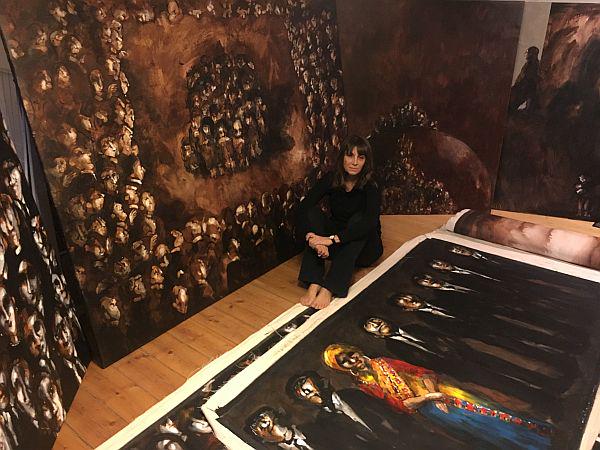
An artist named Ejti Štih has achieved widespread fame for her paintings of ordinary people from Latin America and is one of Bolivia’s foremost artists. Even though she has embraced the culture of her adoptive land, Štih retains strong bonds to Slovenia, the country of her birth.
Marija Štih, nicknamed Ejti, was born in 1957 to educated parents in the Slovenian town of Kranj; her mother is an artist, while her father was a writer and a public intellectual. She chose to pursue her mother’s career and studied art both in Zagreb and Ljubljana.
The young Ejti was a restless spirit, however, and after visiting Latin America as a 24-year-old backpacker, she decided to move to Bolivia full-time, even though she knew no one in that country. She ultimately settled in Santa Cruz de la Sierra, then a medium-sized jungle town. What captivated her the most about her new homeland, she told a local newspaper, was the exoticism of the tropics -- a world of parrots, Indigenous culture, and warm tropical evenings in which the entire town gathered in the main square. At first, she made a living by designing costumes for the local carnival. She eventually married a Bolivian and opened a gallery in an abandoned police station.
Štih quickly became a high-profile artist, working on everything from illustrations to set design. She has designed sets for more than 45 plays in Bolivia and Slovenia, and has even won Slovenia’s prestigious Borštnik Prize, given out for achievement in theater.
Her paintings of ordinary Latin Americans became particularly well-known; many of her works, which have been described as “journalistic,” focus on the poor and their everyday concerns. But she is also known for her humor: Some of her gently mocking portraits of leading politicians even caused the Bolivian government to send a team of inspectors to an exhibition.
Štih also retains close ties to Slovenia; she frequently exhibits in the country and her art sometimes tackles European topics; the influx of Syrian refugees into Europe was the subject of one of her recent exhibitions. Since she is an immigrant herself, the plight of the Syrian migrants touched her personally.
In her work, Štih has combined the bright colors of Bolivia – once frowned upon in Slovenian art – and the optimism of Latin America with a Slovenian perspective to create a style that is uniquely her own.

































































